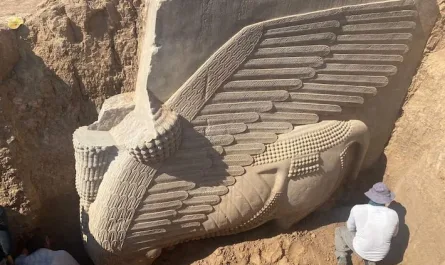Imagine a 4,000-year-old clay tablet revealing a list of kings who ruled for hundreds of thousands of years—kings described as gods who descended from the heavens. This is the enigma of the Sumerian King List, an ancient text uncovered by German-American scholar Hermann Hilprecht in the early 20th century. Discovered in the ruins of Mesopotamia, this artifact offers a tantalizing glimpse into the beliefs and history of one of humanity’s earliest civilizations. But are these accounts of divine rulers fact, myth, or something else entirely?

The Sumerian Civilization
The Sumerians, flourishing around 7,000 years ago in Mesopotamia (modern-day Iraq and Syria), were pioneers of early civilization. Nestled between the Tigris and Euphrates rivers, their advanced society gave us writing, agriculture, and complex governance. Among the many artifacts unearthed from their cities, the Sumerian King List stands out as one of the most intriguing and controversial.
The Discovery of the King List
In the early 1900s, Hermann Hilprecht excavated at least 18 cuneiform tablets (circa 2017–1794 BCE) in what was once Sumer. These tablets, though not identical, appear to draw from a single historical source. Additional copies of the Sumerian King List have been found in ancient cities like Babylon, Susa, Assyria, and the Royal Library of Nineveh from the 7th century BCE. The most famous artifact, the Weld-Blundell Prism, preserves this extraordinary record.
The Antediluvian Kings
Written in the Sumerian language, the King List chronicles a succession of rulers, their reigns, and the cities they governed. Most astonishingly, it describes eight kings who ruled before a catastrophic Great Flood, reigning for a staggering 241,200 years. The text begins:
“After the kingship descended from heaven, the kingship was in Eridug. In Eridug, Alulim became king; he ruled for 28,800 years. Alaljar ruled for 36,000 years. 2 kings; they ruled for 64,800 years. Then Eridug fell, and the kingship was taken to Bad-tibira.”
The list continues, detailing rulers across five cities—Eridug, Bad-tibira, Larag, Zimbir, and Shuruppag—with reigns ranging from 18,600 to 43,200 years. Key figures include:
-
En-men-luana (Bad-tibira): 43,200 years
-
Dumuzid, the shepherd (Bad-tibira): 36,000 years
-
Ubara-Tutu (Shuruppag): 18,600 years
In total, eight kings across five cities ruled for 241,200 years before “the flood swept over.”

Divine Rulers or Myth?
How could anyone rule for tens of thousands of years? The King List includes legendary figures like Etana, Lugal-banda, and Gilgamesh, whose reigns seem implausible by human standards. Some interpret these as gods with supernatural lifespans, possibly linked to the Anunnaki, a Sumerian pantheon of deities meaning “princely offspring” or “offspring of Anu,” worshipped as early as 5500 BCE.
Caption: The Anunnaki, Sumerian deities venerated as early as 5500 BCE, were considered the highest gods in the Mesopotamian pantheon.
Others argue the long reigns reflect symbolic or exaggerated timelines, perhaps a Sumerian way of honoring revered leaders. Yet, some researchers reject the myth theory, pointing to historical correlations. For instance, the King List’s mention of a Great Flood and eight pre-flood rulers bears striking similarities to the Bible’s Book of Genesis, which describes eight generations from Adam to Noah before a global deluge. Post-flood, both texts note a decline in longevity, fueling speculation about shared ancient traditions.
A Historical Puzzle
The Sumerian King List remains a mystery. Could these “gods” have been real beings with advanced technology that extended their lives? Or is the list a blend of history, mythology, and cultural storytelling? The text also includes tales of Gilgamesh and other traditions, suggesting it served as both a historical record and a repository of Sumerian lore.
For some, the King List is evidence of extraordinary beings—perhaps extraterrestrial—who shaped early human civilization. Others see it as a window into how the Sumerians understood their past, blending fact and legend.

Why It Matters Today
The Sumerian King List challenges us to question our origins and the nature of history. Its parallels with other ancient texts, like Genesis, highlight shared human narratives across cultures. Whether you view it as proof of divine rulers or a mythological chronicle, the list underscores the Sumerians’ sophistication and their enduring impact on our understanding of the ancient world.
Explore More
Curious about the Anunnaki and their role in human history? Check out this video for a deeper dive into the Sumerian creation story:
What do you think—were the Sumerian kings gods, myths, or something else? Share your thoughts and join the conversation!


